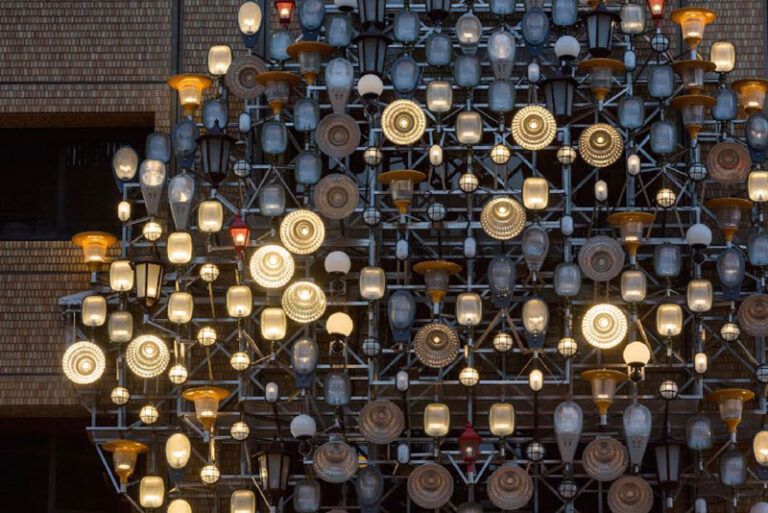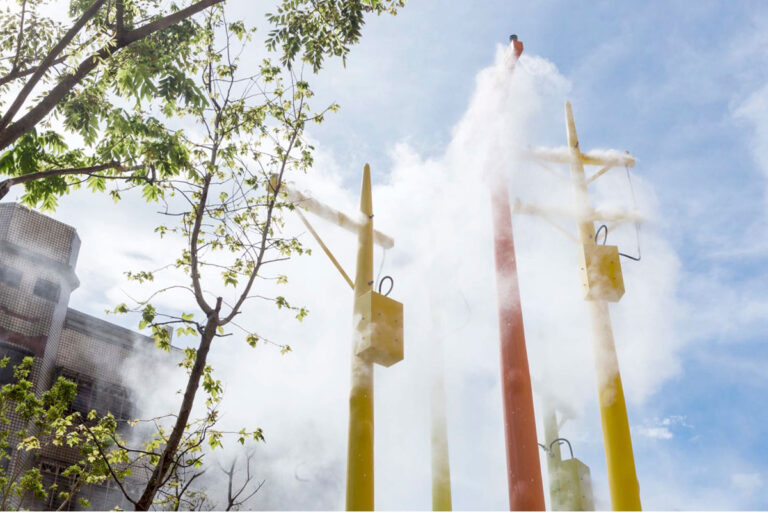-
LocationAt E.SUN Bank Second Headquarters Building, Dunhua North Road
- Directions
- Artwork
- prev
- next
- Directions
- Bookmark
- Share
- prev
- next
-
White Deer
-
Since ancient times, deer have appeared in various settings and have been adored as "sacred messengers" and "divine creatures." In recent years in Japan, it has been said that due to factors such as global warming, forestry, and resort development, the number of deer has continuously increased. Deer appearing in human residential areas are called "lost deer" (迷い鹿). Contemporary Japanese artist Kohei Nawa has collected various forms of deer, digitizing them through 3D scanning to create the "White Deer" design.
Following the Great East Japan Earthquake, the local economy was severely impacted, and it was against this backdrop that the White Deer series was born. Kohei Nawa was invited by the Reborn Art Festival in Miyagi Prefecture in 2017 to create "White Deer (Oshika)." The white deer stand on the land of Ishinomaki City in Miyagi Prefecture, which was affected by the earthquake, gazing towards "the origin of the journey" in Inujima, Seto Inland Sea, symbolizing a prayer for recovery from the disaster in the affected areas.
The shape of the White Deer varies slightly according to its installation location. For example, the White Deer in Akasaka, Tokyo, has the longest antlers because it endures a long winter in Tokyo, looking up at the sky, feeling the signs of spring. The White Deer installed at the second headquarters of E.SUN Bank in Taipei, with its head facing the direction of E.SUN Bank headquarters building, gazes at the sky heralding the arrival of spring, guarding the land of Taiwan, and conveying messages of peace, hope, and love.
The nighttime lighting plan for the artwork was designed by a well-known Japanese lighting design team invited by the artist. With meticulous calculations of lighting angles, the work's streamlined curves and layers are highlighted at night, adding a more modern visual effect.
-
White Deer
- Creator(s)Kohei Nawa
- Year of Creation2022
- SculptureAluminum, Paint
- AddressNo. 315, Dunhua North Road, Songshan District, Taipei City
- Installation SiteAt E.SUN Bank Second Headquarters Building, Dunhua North Road



